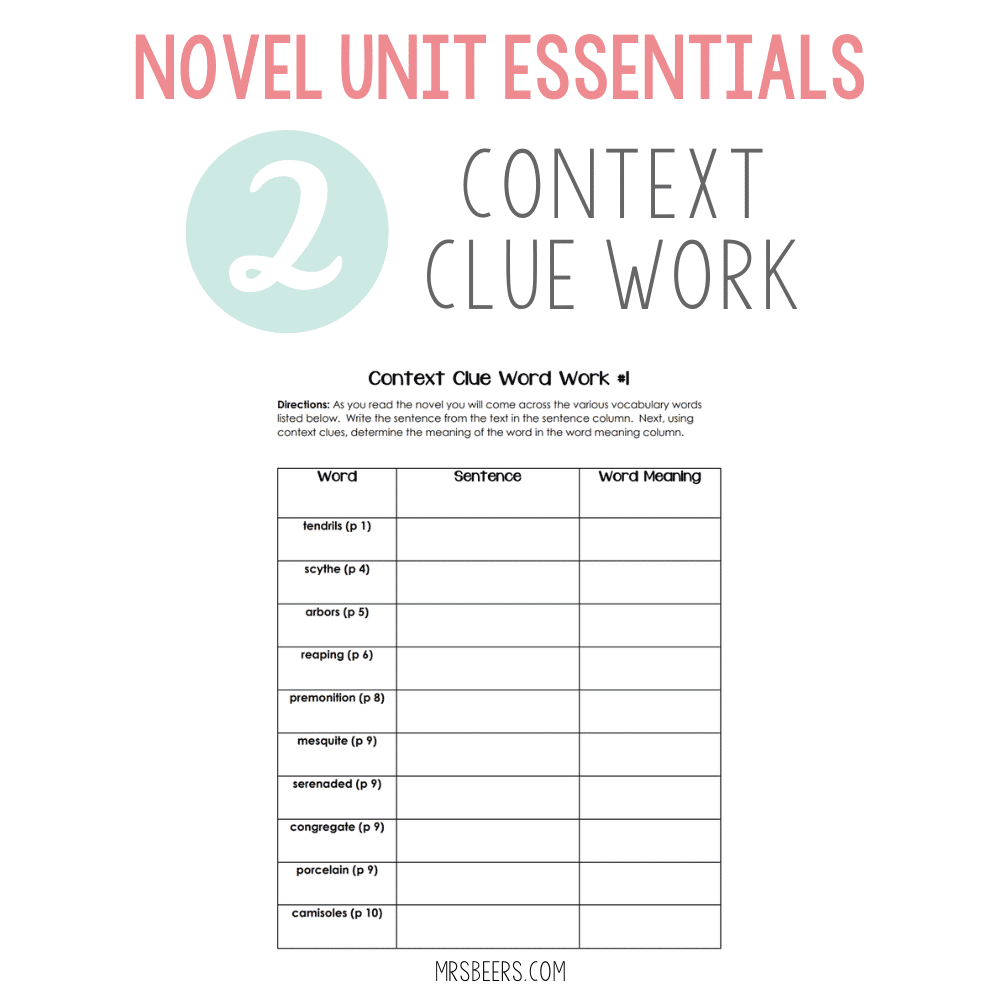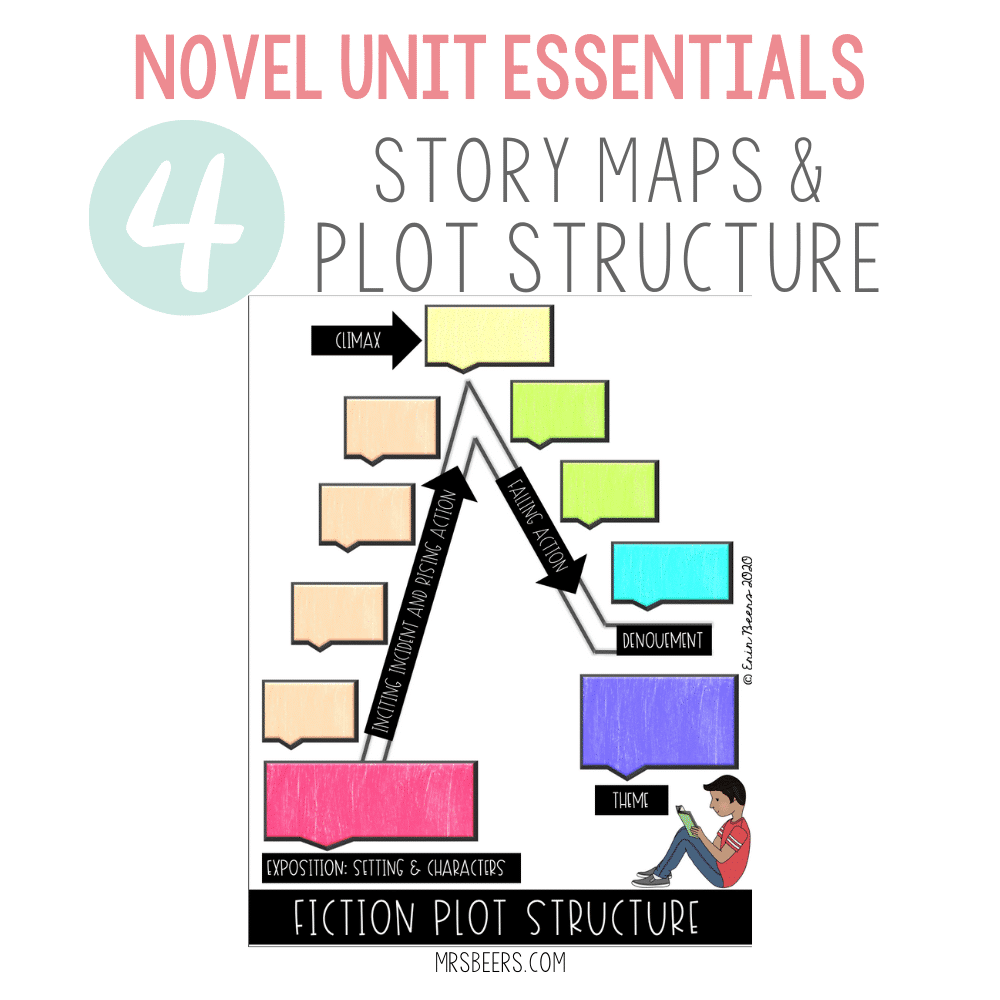
“A writer only begins a book, a reader finishes it.”-Samuel Johnson
As a reading teacher, I find that there is so much truth to this statement. One of the essential things that I believe is that it takes a special skill set for students to select a best-fit book and see it through to completion. As a middle school teacher, I am consistently sharing book recommendations with my students, but there are many times my students struggle to complete self-selected texts. A book is chosen, there is a struggle to connect, interest is lost, and the book is abandoned.
Helping students become lifelong readers is a process.
To stop this unproductive cycle, I love to implement novel units. Novel units are a must-have addition to your middle school teacher toolbox. They help teachers focus on reading standards while also providing engagement, focus, connection, and clarity to readers. I have utilized them in my upper elementary and middle school classrooms over the last 20 years because the components that I incorporate allow my students to more effectively “finish” their reading selections.
While there are so many components that can be incorporated into novel units, helping my students to better analyze characters, utilize context clues, connect with the text through literal and inferential questions, determine a text’s plot structure, and reflect on reading through writing are a few of the ways I work to create more aware and effective readers.
Here is an overview of the components I regularly use with my middle school readers.

Character analysis is a HUGE part of the reading process. Being able to connect with characters and recognize how the story’s plot impacts the character(s) over time is a critical skill. When too many characters are introduced at once, it can be overwhelming, but especially daunting for a struggling reader. By creating a chart to better track and analyze characters’ actions and traits, I am teaching my students a strategy that they can carry forward to other texts that they read.
Before reading, my students know that these are the characters they will be introduced to within the text. By completing this character analysis, it allows my students to jot down notes about each character while reading. At the end of the text, we can discuss how different events impacted each character, causing them to change over time. The character analysis chart in the image above is from my Maniac Magee Novel Study Unit.

Vocabulary is the key to reading comprehension. Readers cannot understand what they are reading without knowing what most of the words mean. My 7th graders are expected to determine the meaning of words and phrases as they are used in a text, including figurative and connotative meanings.
To help my students navigate challenging words in text, I teach them to utilize context clues. As they are reading, I want students to identify any unfamiliar words or terms within the sentence. In that sentence or surrounding sentence, can they find a synonym, an antonym, the word’s definition, or infer the meaning? To develop this skill, we practice A LOT.
This organizer can be utilized for pre-reading, during reading, and post-reading. The goal is to give students specific words to look for within a given text and identify context clues (synonyms, antonyms, a definition, or an inference) to make sense of the given word. Guided practice with context clues makes progress. The vocabulary chart in the image above is from my Esperanza Rising Novel Study Unit.

Our 7th grade reading literature standard requires students to cite several pieces of textual evidence to support analysis of what the text says explicitly as well as inferences drawn from the text. To further develop this skill, I generate questions that help my students make sense of the text. Literal questions allow my students to find specific information explicitly stated in the text, while inferential questions force my students to think about their thinking.
During and after reading, having students generate both literal and inferential questions about a whole-class text is an awesome strategy for further developing this skill. In addition, with both literal and inferential questions, I always ask students to share the page where they found their response or generated their thoughts in order to encourage being able to support their thinking.
Reading comprehension is critical to feeling successful as a reader.
The example in the image above shows literal questions generated from my Tuck Everlasting Novel Study Unit. While I incorporate comprehension questions into each of my units, the goal is that they are used as a guided practice tool to enhance student understanding of a text to help students recall and reflect on the reading. While I have created these comprehension pages within each unit, I encourage teachers utilizing my units to modify them to give students choice and voice in how they respond to the questions.

Story maps and plot structures are great tools to help students identify the elements of a plot. My students need to understand the major events within a story, including the exposition (introduction of setting and characters), rising action, climax, falling action, and resolution. A plot structure organizer is the perfect resource to help students navigate where characters encounter major challenges that impact any changes they make over the course of the text.
By utilizing this organizer with my readers, students can record and reflect on major events within the story. In addition, this is a tool I can utilize a few times through guided practice with whole class text, and my students can re-create in their reader’s notebook with a self-selected novel or text. The plot organizer in the image above is from my Bud, Not Buddy Novel Study Unit.

I am consistently asking my students to write about reading in a variety of formats. I will have students sketch notes while I read aloud to jot down any connections, questions, notable quotes, or images. In addition, I love to give students the opportunity to reflect on their reading by responding to both student and teacher-generated prompts.
Writing about reading allows my students to share their own connections, inferences, insights, and understandings of the words the author has shared. Writing about reading allows my readers to make sense of and elaborate on those words. The journal prompt examples in the image above are from my Wonder Novel Study Unit.
Novel units should NEVER be utilized as a form of “busy work”. The idea being-“read this, and now do this!”
My purpose for novel units is to utilize them as guided practice in order to help my students gain greater independence as aware, engaged, and effective readers of text. My goal is to instill a LOVE of reading in my students. Through the guided practice of novel units, that work can be done efficiently, leading to greater independence in my student readers.
You and your students can create your own novel units…
If you are looking to utilize my 5 essential novel unit activities but adapt them for your own students and the novels they are reading, this is the perfect resource. Use it as a during-and-after reading comprehension tool that works with any novel.
Here are some of the project ideas I have outlined in this PDF resource:.
- Character Trading Cards
- Main Character vs. Me Venn Diagram
- My Paper Friend Craft Project
- An Interview with a Main Character
- A Letter to the Author
- Book Cover Makeover
- My Novel: A Picture Book
- Nutritious Novelties
- Word Work Word Search
- Rubrics for Each Project
- Read the full description and 5-star reviews on TPT
Each year, I share this JK Rowling quote with my students…
“If you don’t like to read, you haven’t found the right book.”
I make it my mission to put those “right” books in my students’ hands and arm them with tools to not just tolerate but also help them to love reading. Best wishes for an amazing year filled with great books!




